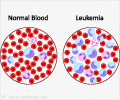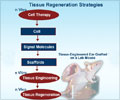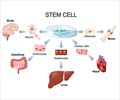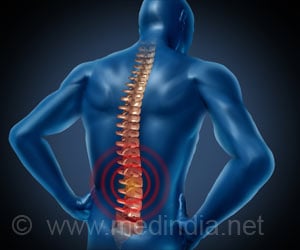Bone marrow stem cells have been programmed to repair damaged retinas in mice, by scientists at the University of Florida. This study thus moves research a step closer to developing a potential treatment for one of the most common causes of vision loss in older people.
The researchers say that the success in repairing a damaged layer of retinal cells in mice indicates that blood stem cells taken from bone marrow can be programmed to restore a variety of cells and tissues, including ones involved in cardiovascular disorders like atherosclerosis and coronary artery disease."To our knowledge, this is the first report using targeted gene manipulation to specifically program an adult stem cell to become a new cell type. Although we used genes, we also suggest you can do the same thing with drugs but ultimately you would not give the drugs to the patient, you would give the drugs to their cells. Take the cells out, activate certain chemical pathways, and put the cells back into the patient," said Dr. Maria B. Grant, a professor of pharmacology and therapeutics at UF's College of Medicine.
The researchers revealed that they used a virus carrying a gene to that pushed cultured adult stem cells from mice toward a fate as retinal cells.
According to them, only after the stem cells were reintroduced into the mice did they completely transform into the desired type of vision cells, apparently taking environmental cues from the damaged retinas.
Studying the cell-transformation process enabled the scientists to bypass the gene manipulation step entirely, and instead use chemical compounds that mirrored environmental conditions in the body, thus pointing the stem cells toward their ultimate identities as vision cells.
"First we were able to show you can overexpress a protein unique to a retinal cell type and trick the stem cell into thinking it is that kind of cell," said Grant, who collaborated with Dr. Edward Scott, the director of the Program in Stem Cell Biology and Regenerative Medicine at UF's McKnight Brain Institute.
Advertisement
Scientists chose to build retinal pigment epithelial (RPE) cells, which form the outer barrier of the retina.
Advertisement
"This work applies to 85 percent of patients who have age-related macular degeneration. There are no therapies for this devastating disease," Grant said.
During the study, the researchers removed blood stem cells from the bone marrow of mice, modified the cells in cultures, and injected them back into the animals' circulatory systems. From there, the stem cells were able to home in on the eye injury and become retinal cells.
The researchers say that 28 days after receiving the modified stem cells, the mice that had previously demonstrated no retinal function were no different than their normal counterparts in electrical measures of their response to light.
A paper describing the study will be published in the journal Molecular Therapy in September.
Source-ANI
RAS














